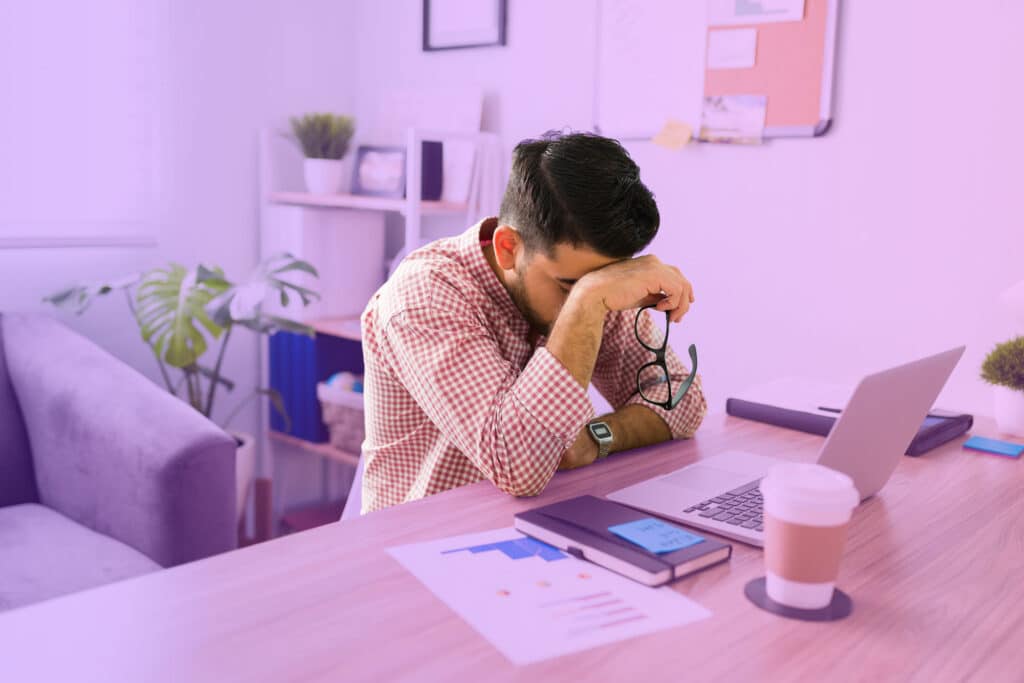
Did you know that the average Aussie worker takes approximately 9.7 days of personal leave annually? Sick leave or personal leave as it’s known under the Fair Work Act (2009) (Cth) is a fundamental aspect of an employee’s workplace entitlements. Whether you’re a business owner or people manager, you must be aware of your employees’ rights to access this leave entitlement, notice and evidence requirements, and the circumstances where disciplinary actions may be necessary.
In this article, we answer everything from what personal/carers leave is to what happens when this entitlement is accessed on a public holiday. Let’s get into it…
1. What is the personal/carer’s leave entitlement?
Every permanent employee is entitled to paid personal/carer’s leave, which accrues based on the number of ordinary hours an employee works:
- Full-time employees working a 38-hour week or more will accrue two weeks (10 days) of personal/carer’s leave per year.
- Part-time employees accrue annual leave on a pro-rata or proportionate basis, e.g., a part-time employee working 19 hours per week accrues 38 hours of personal/carer’s leave per year.
- Casual employees are not entitled to paid personal/carers leave but are entitled to two days of unpaid carers leave. Unpaid carer’s leave can be taken in one continuous period of up to two days, or separate periods by agreement with the employer.
Personal/carer’s leave continues to accrue whilst an employee is on paid annual leave or personal/carer’s leave. Personal/carer’s leave will not accrue on unpaid leave.
2. What happens when personal/carer’s leave runs out?
Where a permanent employee has used their entire balance of accrued paid personal/carer’s leave and they require personal/carer’s leave due to a permitted reason, they may take unpaid personal/carer’s leave.
3. When can personal/carer’s leave be used?
An employee may take personal leave if:
- they are unfit for work because they are ill or injured.
An employee may take carer’s leave if:
- a member of their “immediate family” or household is ill, injured or affected by an emergency and the employee needs to provide care or support to them as a result.
“Immediate family” members include the employee’s spouse, de facto partner, child, parent, grandparent, grandchild or sibling, or the employee’s spouse or de facto partner’s child, parent, grandparent, grandchild, or sibling.
4. Do employees get paid when they are on personal carer’s leave?
All employees must be paid their base rate of pay for the ordinary hours they would have worked during the period.
The employee’s base rate doesn’t include bonuses, loadings, allowances, overtime or penalty rates. For example, in the case of the part-time employee referred to above who works 19 hours per week, if they are unfit to attend work on two of their days of work, and on those days would work seven and eight hours respectively, the employee must be paid at their base rate of pay for 15 hours (provided they have 15 hours accrued paid personal/carer’s leave), and 15 hours are deducted from their personal/carers leave balance.
Unlike annual leave, employees don’t get paid out for personal or carer’s leave when the employment comes to an end whether by resignation or termination.
5. What notice and evidence requirements exist?
An employee’s entitlement to access paid personal/carer’s leave is dependent on their compliance with notice and evidentiary requirements.
An employee who will be absent from work on personal/carer’s leave is required to notify their employer as soon as is practicable of the reason for the absence and the expected duration of the absence.
Employers have the right to request a medical certificate or other evidence for any absence for personal/carer’s leave. Personal/carer’s leave may be granted without a medical certificate or other evidence at the employer’s discretion.
Employers are recommended to have established policies and procedures surrounding notice and evidence requirements for the taking of personal/carer’s leave. This should include information about the method they are required to use to notify of their absence (for example a personal telephone call rather than a text message) and the circumstances in which they will generally be required to provide medical evidence in support of their absence.
Employees should ensure they familiarise themselves with the relevant policies regarding notification and evidentiary requirements as a breach of policies and procedures may lead to disciplinary action.
6. What happens when personal/carer’s leave is accessed on a public holiday?
If the period during which an employee takes personal/carer’s leave includes a public holiday, the employee is not to be taken to be on personal/carer’s leave for that day.
Understanding personal and carer’s leave is critical for employers to ensure compliance with workplace regulations. Employers should also be proactive in communicating the policies surrounding each type of leave and ensuring that employees are aware of them. This is easy with Citation HR software – with tools to help you write your own policies and ESS for staff to read and accept them, you can ensure all employees are aware of notice periods and preferred methods for calling is sick.
How can Citation HR help?
To help you with any workplace compliance questions you might have, we’d like to offer you a complimentary Workplace Compliance Consultation for your business. Our HR experts will complete a thorough evaluation of your HR that’ll help uncover any hidden risks before they become problems.









